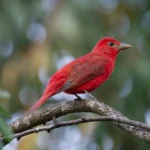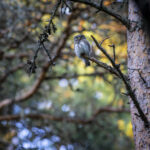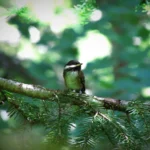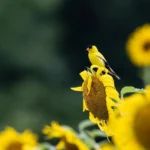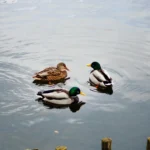Tennessee’s rich and varied landscapes, from dense forests to open woodlands and suburban areas, provide a welcoming haven for numerous woodpecker species. These fascinating birds captivate birdwatchers and nature enthusiasts with their vibrant plumage, unique behaviors, and rhythmic drumming. From the tiny Downy Woodpecker to the impressive Pileated Woodpecker, each species plays an essential role in maintaining the health of the ecosystems they inhabit. Woodpeckers found in Tennessee contribute to pest control, seed dispersal, and forest regeneration. Exploring Tennessee’s woodlands offers an exciting opportunity to witness these avian marvels up close.
Table of Contents
1. Downy Woodpecker

The Downy Woodpecker is the smallest woodpecker species in North America, making it a charming addition to Tennessee’s bird population. Its black-and-white plumage, along with a small red patch on the male’s head, makes it easy to identify.
This adaptable bird is a frequent visitor to backyard feeders, often delighting birdwatchers with its lively activity.
Preferring deciduous forests, parks, and gardens, the Downy Woodpecker plays an important ecological role by feeding on insects that could harm trees. Its diet also includes seeds and suet, ensuring its presence throughout the year.
With its diminutive size and vibrant demeanor, the Downy Woodpecker is a beloved resident of Tennessee’s natural and suburban landscapes.
Also Read : Discover 10 Types of Hawks in Illinois
2. Hairy Woodpecker

The Hairy Woodpecker is a slightly larger cousin of the Downy Woodpecker, sharing similar black-and-white patterns and a red patch on the males.
Known for its strong beak, this species is often heard before it is seen, with its distinctive drumming resonating through Tennessee’s forests.
The Hairy Woodpecker’s diet consists mainly of insects, particularly wood-boring beetles, which makes it an essential ally in maintaining forest health. It also consumes nuts and berries, adding variety to its diet.
Often spotted in mature forests and wooded residential areas, the Hairy Woodpecker’s presence indicates a thriving ecosystem. Its striking appearance and beneficial habits make it a favorite among bird enthusiasts.

3. Red-bellied Woodpecker

The Red-bellied Woodpecker is a striking and vocal bird commonly found in Tennessee’s woodlands and suburban areas.
Despite its name, the red patch on its belly is subtle, while its vivid red cap and nape are far more prominent.
This medium-sized woodpecker is known for its loud calls and acrobatic foraging behaviors as it searches for insects, fruits, and seeds.
Its adaptability allows it to thrive in various habitats, from dense forests to backyard feeders. By storing food in tree crevices, the Red-bellied Woodpecker contributes to the dispersal of seeds, aiding plant regeneration. Its vibrant colors and dynamic behaviors make it a delightful sight for birdwatchers.
Also Read : All About Pileated Woodpecker: The Forest’s Master Drummer
4. Northern Flicker
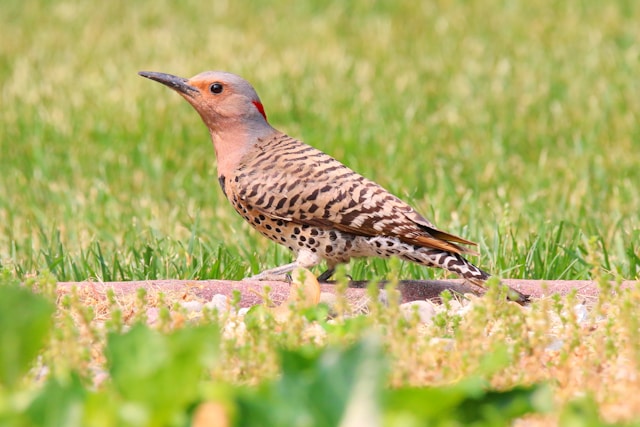
The Northern Flicker stands out among woodpeckers for its unique habits and appearance.Often seen foraging on the ground, this bird’s preference for ants and beetles sets it apart from its arboreal relatives.
Its brownish body, accented with black spots and a bright yellow or red flash in its wings, adds to its distinct charm.Found in open woodlands, fields, and suburban areas, the Northern Flicker is a frequent visitor to Tennessee.
It is also known for its loud, ringing calls that echo through its habitat.With its distinctive coloring and behaviors, the Northern Flicker offers a refreshing change from the typical woodpecker profile, making it a favorite for observation.
5. Pileated Woodpecker

The Pileated Woodpecker is a true giant among its peers, captivating birdwatchers with its size and striking features.With its black body, bold white stripes, and an iconic red crest, this species is often likened to a prehistoric bird.
Found in mature forests across Tennessee, the Pileated Woodpecker is a skilled carpenter, chiseling large rectangular holes in trees to access carpenter ants and beetles.
These cavities often become nesting sites for other species, showcasing its ecological importance.Despite its preference for secluded habitats, its loud drumming and calls make it easy to locate.This impressive woodpecker symbolizes the grandeur of Tennessee’s forest ecosystems.
6. Red-headed Woodpecker

The Red-headed Woodpecker is a vivid and dynamic bird, easily recognized by its completely red head and contrasting black-and-white body.This medium-sized woodpecker is not just visually stunning but also remarkably versatile.
It is known for its aerial acrobatics, catching insects mid-flight, and for its unique habit of storing food for later consumption.Found in open woodlands, orchards, and parks, the Red-headed Woodpecker plays a crucial role in seed dispersal and insect control.
Its striking appearance and engaging behaviors make it a standout species in Tennessee’s avian community, providing both ecological benefits and aesthetic pleasure to those lucky enough to observe it.
7. Yellow-bellied Sapsucker

The Yellow-bellied Sapsucker is a fascinating species known for its methodical feeding habits.This medium-sized woodpecker drills orderly rows of holes in trees to extract sap, which forms the majority of its diet along with small insects.
With its black-and-white plumage and distinctive red cap, the Yellow-bellied Sapsucker is a striking sight in Tennessee’s deciduous forests and orchards.Its sap wells not only nourish the bird itself but also provide sustenance for other species, highlighting its ecological significance.
Despite its relatively quiet demeanor, the Yellow-bellied Sapsucker’s unique habits and bold markings make it an intriguing addition to Tennessee’s woodpecker family.
8. Ivory-billed Woodpecker

The Ivory-billed Woodpecker holds an almost mythical status among bird enthusiasts, often referred to as the “Lord God Bird” for its striking appearance and elusive nature.
Once inhabiting Tennessee’s swampy forests, this large woodpecker is considered critically endangered or possibly extinct.Its black-and-white plumage, accentuated by a prominent white stripe on its wings and a crest (red in males), made it a spectacular sight.
Feeding primarily on beetle larvae found in deadwood, the Ivory-billed Woodpecker played a vital role in forest ecosystems.Although unconfirmed sightings continue to fuel hope for its survival, the Ivory-billed Woodpecker remains a symbol of conservation efforts and a reminder of nature’s fragility.
9. Red-cockaded Woodpecker

The Red-cockaded Woodpecker is a small yet significant species, recognized for its intricate nesting habits.Preferring mature pine forests, it creates nesting cavities in living pine trees, a rare behavior among woodpeckers.
Its name comes from the subtle red streak or “cockade” found on males, which is often difficult to spot.This bird’s reliance on specific habitats has made it a focus of conservation efforts in Tennessee and beyond.
Feeding on insects and tree sap, the Red-cockaded Woodpecker contributes to the health of its forest home.Its role as an ecosystem engineer and its striking appearance make it a species of both ecological and aesthetic value.
10. Yellow-shafted Northern Flicker

The Yellow-shafted Northern Flicker is a dazzling subspecies of the Northern Flicker, distinguished by the bright yellow undersides of its wings and tail feathers.
Found across Tennessee’s open woodlands and urban areas, this bird is known for its ground-foraging habits, primarily feeding on ants and beetles.Its loud, repetitive calls and rhythmic drumming make it easy to detect.
The Yellow-shafted Northern Flicker is also a strong flier, with its golden plumage flashing brilliantly in flight.Its combination of vibrant coloring, unique feeding habits, and adaptability to different habitats makes it a favorite among birdwatchers, adding a splash of color to Tennessee’s avian diversity.
11. Lewis’s Woodpecker

Lewis’s Woodpecker is an extraordinary species with its dark green and pinkish plumage, setting it apart from typical woodpeckers.Named after explorer Meriwether Lewis, this bird is a rare visitor to Tennessee, usually spotted during migration.Unlike most woodpeckers, Lewis’s Woodpecker prefers catching insects mid-air rather than drilling into trees.
It thrives in open woodlands and areas affected by forest fires, where its diet includes flying insects, berries, and nuts.Its graceful flight and striking colors make it a sought-after sight for birdwatchers.
Though not a regular resident, Lewis’s Woodpecker’s occasional presence adds a touch of rarity to Tennessee’s birding scene.
12. Three-toed Woodpecker
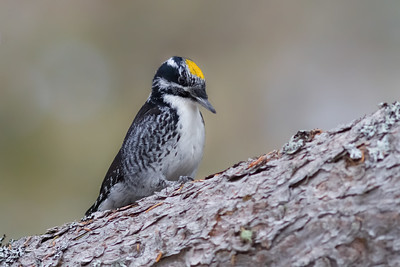
The Three-toed Woodpecker is a unique species, aptly named for its unusual foot structure with only three toes.
Although rare in Tennessee, this woodpecker prefers boreal and coniferous forests, where it feeds on bark beetles and larvae.Its black-and-white plumage, accented with a yellow crown in males, helps it blend into its forested surroundings.
The Three-toed Woodpecker’s presence is often an indicator of healthy forest ecosystems, as it specializes in controlling pest populations.
While sightings in Tennessee are infrequent, its distinct features and ecological importance make it a fascinating subject for bird enthusiasts who venture into its preferred habitats.
13. Ladder-backed Woodpecker

The Ladder-backed Woodpecker is a small yet striking species, named for the ladder-like black-and-white stripes adorning its back.
While it is more commonly found in the southwestern United States, this woodpecker occasionally ventures into Tennessee, particularly during unusual migratory patterns.Its compact size and bold markings make it a delightful find for birdwatchers.
Feeding on insects, fruits, and seeds, the Ladder-backed Woodpecker adapts to various habitats, including scrublands and desert edges.Its occasional appearances in Tennessee provide an exciting opportunity for birders to observe a species that brings a touch of the arid Southwest to the southeastern landscapes.
Final Thoughts
Tennessee is a birdwatcher’s paradise, teeming with woodpeckers that bring color, sound, and ecological benefits to its natural habitats. Grab your binoculars and immerse yourself in the joy of observing these remarkable birds. Whether you’re spotting the rare Lewis’s Woodpecker or enjoying the vibrant Red-bellied Woodpecker, every encounter adds a touch of wonder to your outdoor adventures. Explore Tennessee’s forests and woodlands, and let the diverse world of woodpeckers inspire your connection to nature.

Welcome to World Birds Life, where the wonder of birds takes center stage. My name is Lexi, and I’m passionate about helping you discover the beauty and joy that birds bring into our lives.


